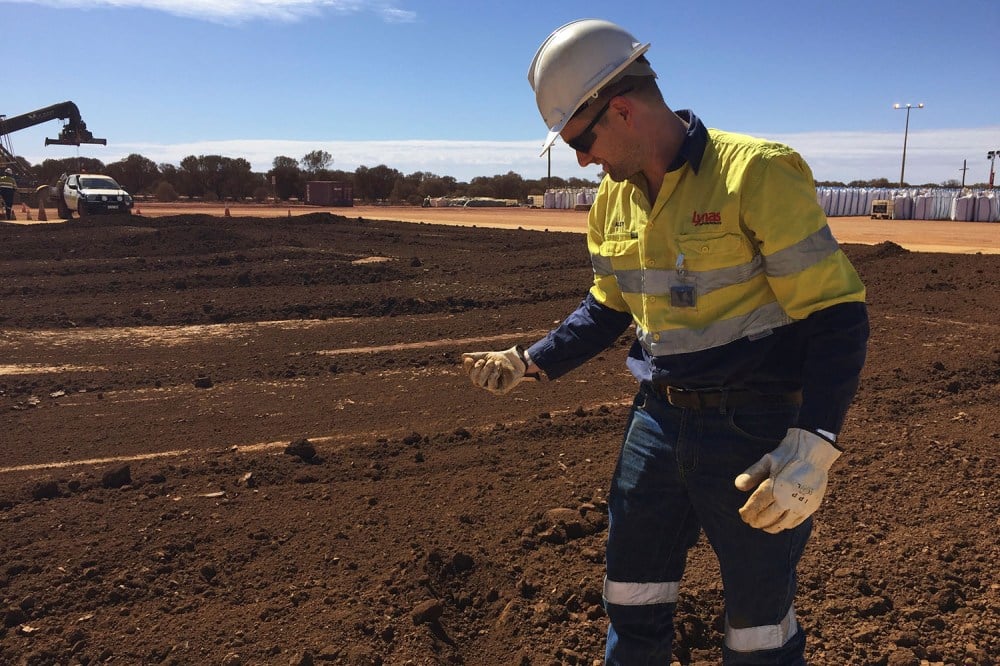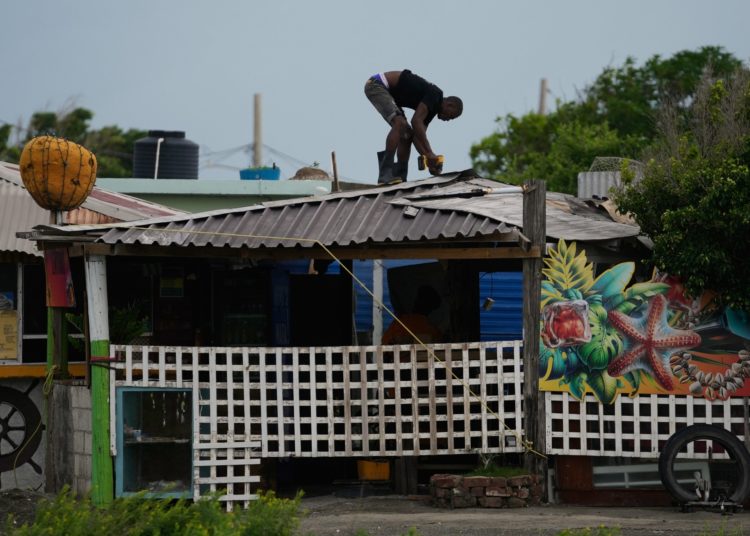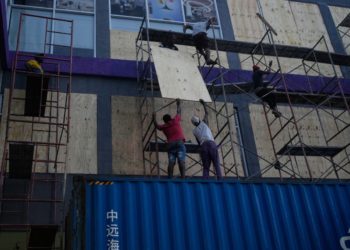China’s latest announcement of export controls on rare-earth minerals has reignited familiar concerns in the United States, Europe, and elsewhere about supply chain vulnerabilities, technological dependencies, and geopolitical risk. The seeds of this crisis were planted decades ago, when rare-earth production and processing shifted to China because it was cheaper, or even below cost, and came with little environmental constraints. By outsourcing the environmental burden of rare-earth production to China in exchange for cheap materials, foreign buyers created a structural dependency that has since become both economically and geopolitically risky. Much of the world has benefited from artificially low prices while building their high-tech military technologies and now green industries on very unstable foundations.
To address these geopolitical risks and diversify its rare-earth supply chains, the United States and Australia signed a new $8.5 billion agreement on Oct. 20 following several months of negotiations. Commenting on the deal, U.S. President Donald Trump claimed that “in about a year from now we’ll have so much critical mineral and rare earth that you won’t know what to do with them”; he added that “they’ll be worth $2.”
Those claims sound far from realistic. First of all, it will take years, even up to a decade, to develop enough supply. In reality, rather than becoming cheaper, rare earths are becoming more expensive as countries seek to diversify supply chains. Building new mines, refining facilities, and processing plants in regions such as Australia, the United States, and Europe comes with much higher capital costs, stricter environmental regulations, and more expensive labor and energy inputs.
Projects that were once unviable because of China’s low prices are now being revived—but their economics depend heavily on government subsidies, guaranteed offtake contracts, or defense-related demand. The result is a structural price floor that is rising, not falling. This means that diversification adds security and resilience, but not cheapness.
There are already clear indications that prices are increasing and that there is a willingness to pay the higher costs for secure supply. For example, the U.S. Defense Department took an extraordinary step in July of signing a 10-year offtake agreement with the U.S. company MP Materials that guarantees a price floor of $110 per kilogram for neodymium-praseodymium oxide, a material that is essential for the manufacturing of permanent magnets. This was nearly double the Chinese market price, roughly around $60/kg at the time.
Trump’s projected future price of only $2 (assuming per kilogram pricing) would also be highly problematic from the perspective of both investors and the governments funding new mining contracts with hundreds of millions of U.S. dollars. It would make it impossible for investors to recover the investments required to develop and operate new mining and refining projects, effectively undermining the financial viability of any non-Chinese supply chain.
As recently as 2023, the Japanese government—through the Japan Organization for Metals and Energy Security (JOGMEC)—acquired a 65 percent stake in Australia’s production volume. It invested 200 million Australian dollars (around $131 million in USD) in Lynas Rare Earths to support its production growth projects. The agreement gives Japan priority supply rights to Lynas’s growth capacity until 2038. JOGMEC played a pivotal role after China instated its 2010 rare earth-export restrictions, helping to finance Lynas in Australia and Malaysia. This move helped Japan diversify its rare-earth supply away from China, but it came at a higher cost.
Beyond what is essentially the geopolitical premium that governments and industrial buyers are increasingly willing to pay, future rare-earth prices will need to factor in the cost of reliable, transparent, and environmentally responsible production. Until now, the true costs of pollution to environment and health impacts were simply externalized, historically borne locally rather than priced into rare-earth materials or products. Strict environmental and labor standards in Organization for Economic Cooperation and Development countries created an environmental cost gap, which has been a major deterrent to Western investment in rare-earths supply over the past decade.
China’s rare-earth mining and processing industry has mainly served global markets until the recent export restrictions were imposed, with up to three-quarters of its output destined for export. In 2015, the annual externalized environmental cost associated with these exports was estimated by researchers at around $5.4 billion, reflecting the significant pollution and ecological damage borne domestically in places such as Bayan Obo, a mining district located some 150 kilometers north of Baotau in Inner Mongolia, or Jiangxi province, an industrial center for ionic rare-earth smelting.
Recognizing the environmental burden and toxic legacy created from its rare-earth industry, China has also moved to tighten environmental regulation in recent years and has also offshored some highly polluting rare-earth mining and processing to war-torn Myanmar, prompting severe impacts on the environment and water resources there. If buyers are looking for the cheapest rare earths, then Myanmar is becoming the place to source them—at the expense of human rights, environmental protection, and regional stability.
Efforts to diversify and reshore production will inevitably mean accepting some environmental impacts at home, but doing so should occur under the highest environmental and safety standards, which are essential to minimizing harm. Such standards, however, will raise operating costs, underscoring that a resilient and responsible rare-earth supply chain comes with a higher but necessary price. New rare-earth mining and processing contracts will need to explicitly integrate environmental compliance and sustainability obligations. (Rare-earth processing often generates radioactive and hazardous waste as a by-product of the enrichment processes.)
This is easier said than done. Take the case of Lynas, which shipped its rare earths extracted from Mount Weld in Western Australia to Kuantan, Malaysia, to be processed. The Lynas Advanced Materials Plant was surrounded by significant public opposition and political controversy throughout the 2010s. In 2019, a Malaysian government decision requested Lynas to relocate the most hazardous part of the rare-earths refining chain—cracking and leaching—back to Western Australia within a time frame of four years.
Malaysia signaling that it no longer wished to host the processing marked a significant regulatory tightening for Lynas. For the company and its investors, this added project risks and capital cost, because relocating an industrial process across jurisdictions is complex and expensive. The condition also reinforced the broader strategic shift in supply chains: away from lower-cost refinement in Malaysia and toward onshore processing in Australia, increasing costs and regulatory burden and thus contributing to higher supply chain costs. As a result, Lynas inaugurated is processing plant in the Western Australian city of Kalgoorlie in November 2024. Australia’s tighter environmental oversight will raise operating costs but reduces externalities and pollution.
As production costs rise due to reshoring and diversification away from China, there is a risk that some operators may seek to cut costs by neglecting environmental safeguards. Contracts must therefore include clear environmental performance clauses and define that any breach—such as permit loss or regulatory violation—constitutes a default. Embedding such provisions is essential to ensure responsible production without creating toxic legacies, ensure supply continuity, and promote long-term credibility of non-Chinese rare-earth supply chains.
But paying the full or true price for rare earths is not only about fairness or covering environmental costs; it is also what will unlock the economics of circularity in this sector.
Rare earths are found in a wide range of secondary materials and waste streams. They occur in coal combustion residues such as fly ash. A study by the University of Texas, the first comprehensive national assessment, estimates that coal ash in the United States contains up to 11 million tons of accessible rare earth elements—that’s almost eight times larger than the country’s domestic reserves. This secondary resource could represent roughly $8.4 billion worth of recoverable rare earths.
Despite their resource potential, various forms of electronic waste such as batteries, hard drives from computers, and mobile phones are mostly still disposed of in landfills, representing a significant loss of valuable rare earths. Currently, only about 1 percent of rare earth elements in old electronics are recycled, mainly due to factors such as the complexity it poses to separate the blends that contain them. Magnet recycling innovations will be a key solution.
For example, the French start-up company Carester is developing what could become Europe’s first major operational rare-earth recycling facility. The $245 million project aims to establish a domestic refining capability by combining recycled materials with imported concentrates, targeting up to 15 percent of global demand for heavy rare earths. Scheduled to begin operations by late 2026, it would be Europe’s first large-scale industrial plant dedicated to rare-earth separation, designed to process 2,000 metric tons per year of end-of-life magnets and 5,000 metric tons per year of mined concentrates. The project has attracted investment from Japanese partners (including, again, JOGMEC), and it has received 106 million euros in public funding from the French government, provided through a mix of grants and repayable advances.
Building a secure and responsible rare-earth supply chain that inevitably costs more requires shared responsibility and investments across the value chain. While governments can provide strategic funding, long-term viability depends on investors, manufacturers, and automotive and electronics manufacturers to integrate the real cost of rare earths into their business models. It also means designing a future generation of products for easier disassembly and recovery, investing in closed-loop systems, and securing materials from verified, environmentally compliant sources.
Ultimately, consumers will also need to accept higher prices for electronics and green technologies that reflect their true material and environmental cost. Paying more should not be seen as a penalty but as an investment in resilience, supporting circular supply chains, providing decent working conditions, and preventing environmental damage.
This will entail raising awareness that rare earths are not literally rare, but are indeed precious and finite, and should be used, recovered, and valued accordingly. This collective revaluation can drive innovation toward business models that extend product lifetimes and recover critical materials.
Ensuring that projects are backed by realistic price assumptions is crucial; prices must be high enough to sustain operations, ensure high environmental standards and public health, and safeguard taxpayer investments.
The government investments witnessed in rare-earth mining, processing, and long-term offtake agreements at fixed or guaranteed prices are clear examples of active industrial policy in action. These measures reflect a recognition that market forces alone cannot deliver the diversification and resilience needed in critical mineral supply chains. The high capital costs, long lead times, environmental risks, and price volatility associated with rare-earth projects made them unattractive to private investors without state support. That’s why, over the past decade, many attempts have failed.
This new government-led approach highlights that achieving diversification and sustainability in rare-earth supply chains is not a natural market adjustment but a deliberate policy choice. It reflects a broader recognition that strategic state intervention is essential to drive the systemic transformations needed.
The post Why Rare Earths Are About to Cost a Lot More appeared first on Foreign Policy.




